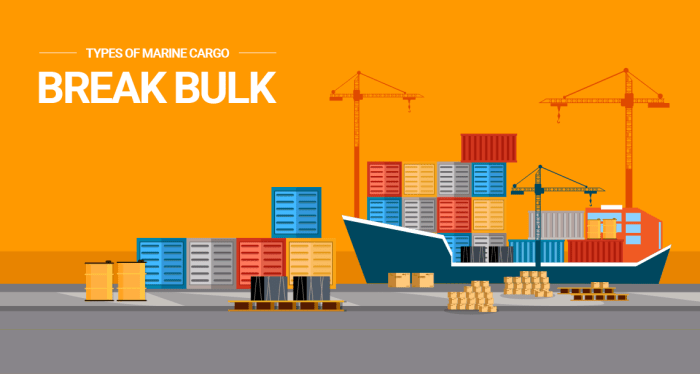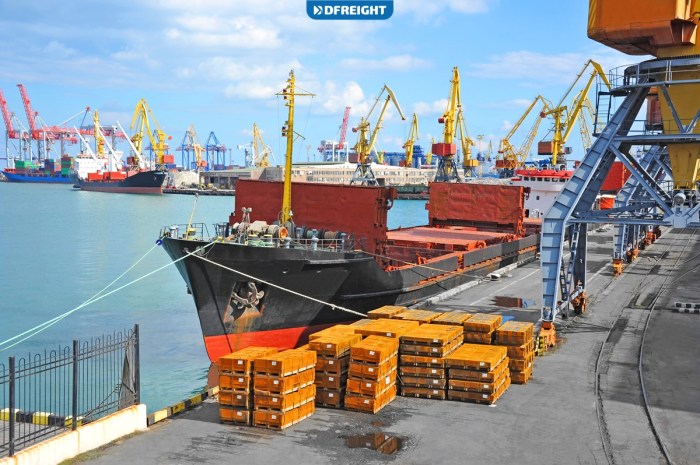Break-of-bulk point definition ap human geography – In AP Human Geography, the break-of-bulk point is a critical concept that plays a pivotal role in the transportation of goods. This detailed analysis delves into the definition, significance, types, challenges, and future trends associated with break-of-bulk points, providing a comprehensive understanding of their impact on global trade and logistics.
The concept of a break-of-bulk point involves the transfer of goods from one mode of transportation to another, such as from ships to trains or trucks. These points facilitate the efficient movement of goods across vast distances, enabling the seamless flow of commodities to consumers worldwide.
Definition of Break-of-Bulk Point

A break-of-bulk point (BOB) is a location where goods are transferred from one mode of transportation to another. This can occur between different types of land transportation, such as rail and truck, or between land and water transportation, such as truck and ship.
BOBs play a critical role in the efficient movement of goods by allowing for the consolidation and distribution of shipments.
There are various types of BOBs, including:
- Inland ports:These are inland facilities that are connected to both rail and water transportation, allowing for the transfer of goods between ships and trains.
- Rail yards:These are large facilities where trains are assembled and disassembled, and where goods are transferred between trains and trucks.
- Truck terminals:These are facilities where trucks are loaded and unloaded, and where goods are transferred between trucks and other modes of transportation.
The location of a BOB is influenced by several factors, including:
- Proximity to transportation networks:BOBs are typically located near major transportation hubs, such as ports, rail lines, and highways.
- Availability of land:BOBs require large amounts of land for storage and handling of goods.
- Labor costs:The cost of labor is a significant factor in the location of BOBs.
Significance of Break-of-Bulk Points
BOBs play a vital role in transportation networks by facilitating the efficient movement of goods. They allow for the consolidation of shipments, which reduces transportation costs and improves efficiency. BOBs also provide a point of distribution for goods, allowing them to be distributed to their final destinations.
The economic and logistical advantages of using BOBs include:
- Reduced transportation costs:By consolidating shipments, BOBs can reduce the cost of transportation.
- Improved efficiency:BOBs allow for the efficient movement of goods by providing a central point for the transfer of goods between different modes of transportation.
- Increased flexibility:BOBs provide flexibility in the movement of goods by allowing shippers to choose the most efficient mode of transportation for each leg of the journey.
Types of Break-of-Bulk Points

BOBs can be classified into different types based on their function and location.
| Type | Function | Location | Examples |
|---|---|---|---|
| Inland ports | Transfer of goods between ships and trains | Inland, near major rivers or canals | Port of Memphis, Tennessee |
| Rail yards | Assembly and disassembly of trains, transfer of goods between trains and trucks | Near major rail lines | Union Pacific Rail Yard, Chicago, Illinois |
| Truck terminals | Loading and unloading of trucks, transfer of goods between trucks and other modes of transportation | Near major highways | J.B. Hunt Transport Services Terminal, Laredo, Texas |
| Intermodal terminals | Transfer of goods between different modes of transportation, including rail, truck, and air | Near major transportation hubs | Los Angeles Intermodal Container Transfer Facility |
Challenges and Opportunities at Break-of-Bulk Points: Break-of-bulk Point Definition Ap Human Geography
BOBs face several challenges, including:
- Congestion:BOBs can experience congestion due to the high volume of goods being transferred.
- Delays:Delays can occur due to the coordination of different modes of transportation and the handling of large volumes of goods.
- Security:BOBs can be a target for theft and other security breaches due to the high value of the goods being transferred.
Despite these challenges, there are also opportunities for optimizing operations at BOBs and improving efficiency. These include:
- Automation:Automation can be used to streamline operations and reduce the risk of errors.
- Data analytics:Data analytics can be used to improve the efficiency of operations and identify areas for improvement.
- Sustainability:BOBs can implement sustainable practices to reduce their environmental impact.
Future Trends in Break-of-Bulk Point Development

Emerging technologies and innovations are shaping the future of BOB operations. These include:
- Blockchain technology:Blockchain technology can be used to improve the security and transparency of BOB operations.
- Artificial intelligence:Artificial intelligence can be used to automate tasks and improve the efficiency of operations.
- Electric vehicles:Electric vehicles can be used to reduce the environmental impact of BOB operations.
These technologies have the potential to transform BOB operations and improve the efficiency and sustainability of the transportation industry.
Question Bank
What is the primary function of a break-of-bulk point?
To facilitate the transfer of goods between different modes of transportation.
How do break-of-bulk points contribute to economic growth?
By reducing transportation costs, improving efficiency, and fostering trade.
What are the key factors that influence the location of a break-of-bulk point?
Proximity to major transportation routes, availability of infrastructure, and economic factors.
